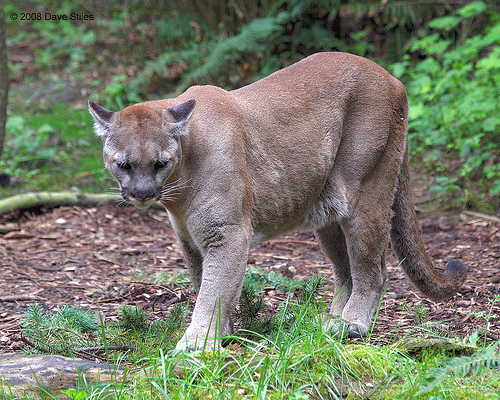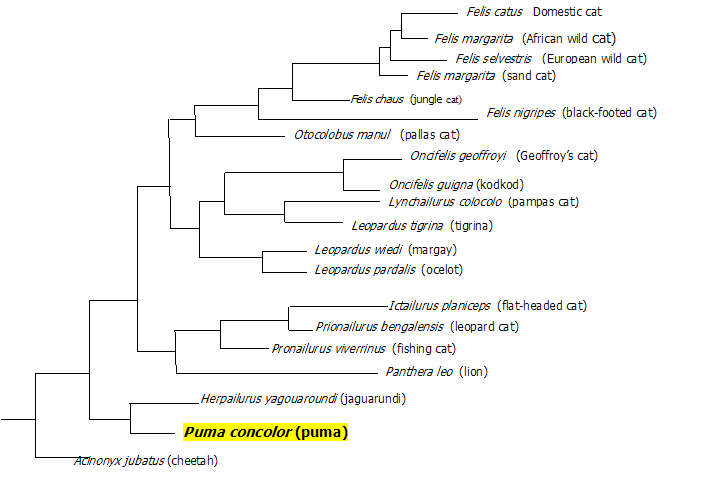Classification
|
Domain- Eukarya
Kingdom- Animalia
Phylum- Chordata
Subphylum- Vertebrata
Class- Mammalia
Order- Carnivora
Family- Felidae
Subfamily- Felinae Genus- Puma
Species-
Puma concolor |
 |
| Classification | Reason for classification |
| Eukarya | The cougar is classified under the domain Eukarya because its cells have membrane-bound organelles and linear DNA enclosed within a nucleus. |
| Animalia |
The cougar is classified under the kingdom Animalia because it is
multi-cellular, heterotrophic, and its cells lack cell walls. |
| Chordata |
The cougar can be classified under the phylum Chordata because of many
reasons. First, a cougar is triploblastic, which means that there are
three tissue types in the embryo eventually forming a coelom
(fluid-filled cavity in the body). Organisms within the phylum Chordata have bilateral symmetry and are highly cephalized which are
very obvious characteristics. Cougars also have segmented
bodies and a complete digestive tract. |
| Vertebrata |
The cougar is classified under the subphylum vertebrata because it has a
backbone. |
| Mammalia | The cougar can be classified under the class Mammalia because it has a body covered with hair, it has glands, and it is homeothermic (it maintains a constant body temperature). |
| Carnivora |
The cougar is classified under the Order Carnivora because it eats
animals that consume other animals or plants. |
| Felidae | The root of the word “feli” is derived from Latin and means cat. The cougar is classified under biological family of the cats because of its retractable claws, shortened jaw, and elongated upper and lower canine teeth. |
| Felinae | The cougar is classified under the Subfamily Felinae which means “small cat” in Latin. |
| Puma |
Contradictory to its classification under the Subfamily Felinae, the
word Puma comes from the Incas and loosely translated means “magic
mighty animal”. |
| Puma concolor |
As stated above, the cougar is termed from the Incas meaning “magic
mighty animal” and concolor
means “with one color” in Latin. |

Home
Classification
Habitat
Reproduction
Nutrition
Adaptations
Interesting facts
About me
References
Multipleorganisms.net